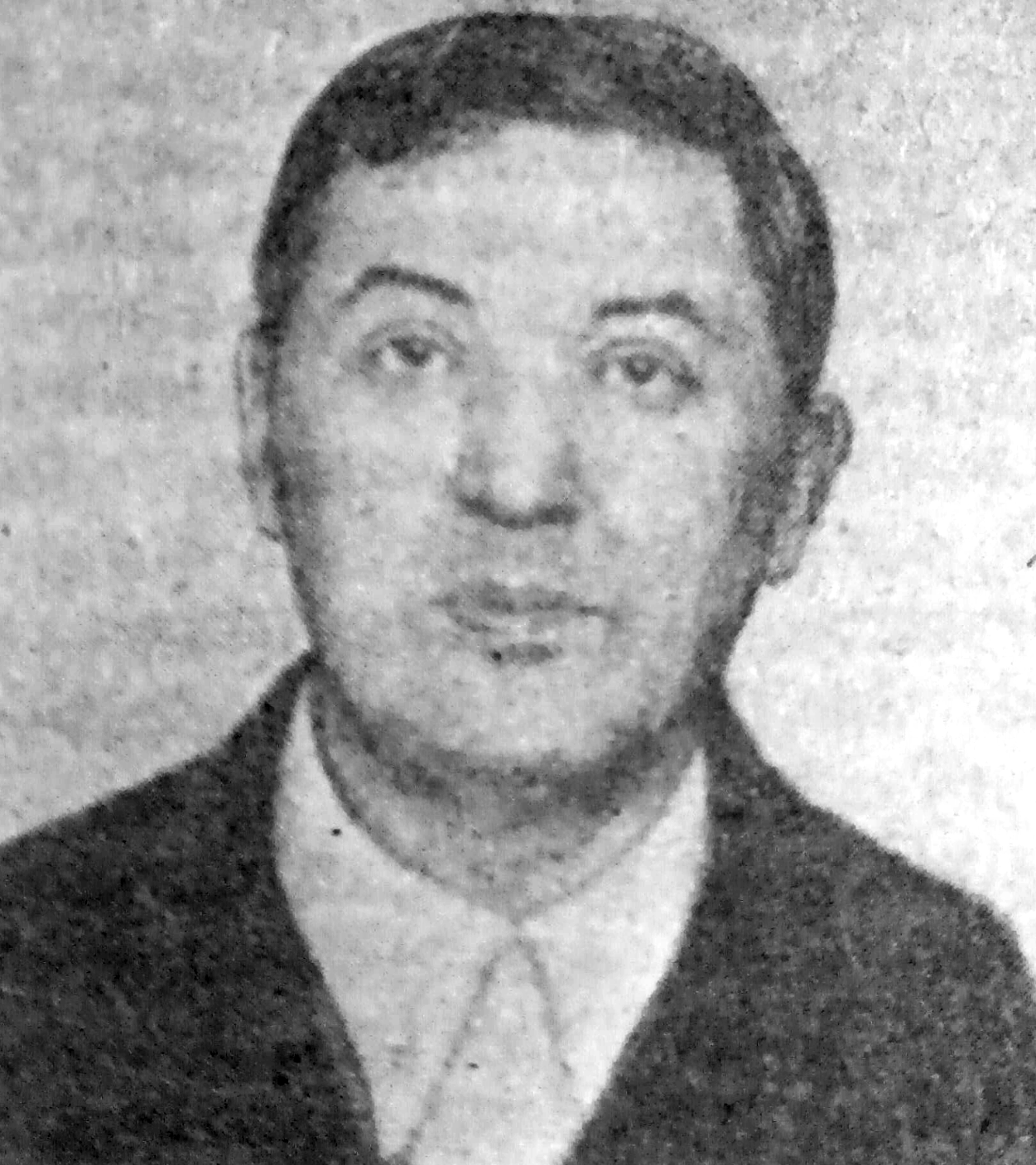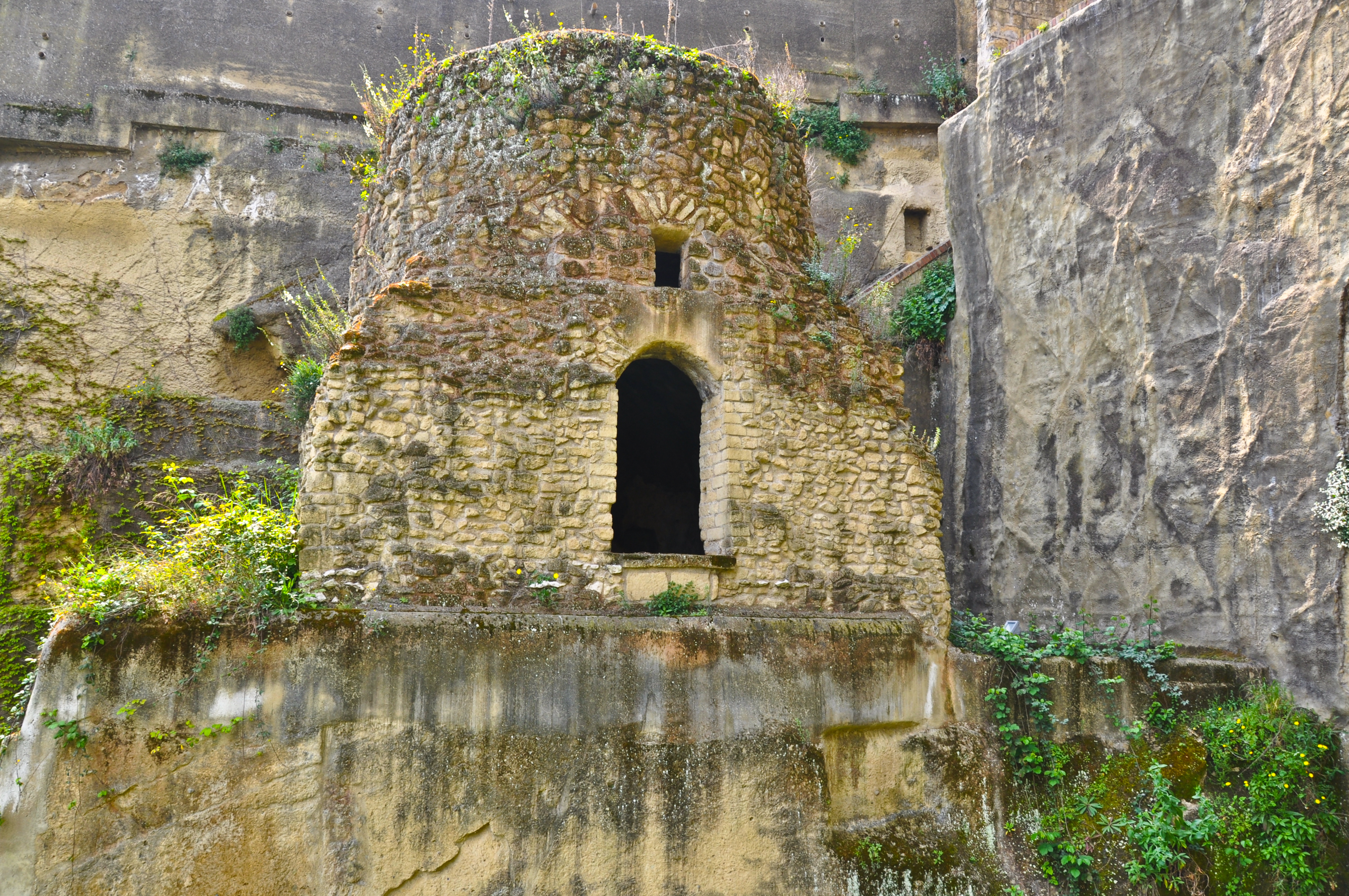|
Dumbrăveni Prison
Dumbrăveni Prison was a prison located in Dumbrăveni, Romania. Construction of the prison began in 1909, under Austria-Hungary. It was linked by a corridor to the courthouse, built simultaneously. A surrounding fence was added in 1942. During the interwar period, the prison housed common criminals, especially thieves and abortionists. It had a separate section for political prisoners, both men and women. It became a center of indoctrination for Romanian Communist Party cadres, among them Olga Bancic and Liuba Chișinevschi; at one point, they wrote a letter protesting against conditions. Ana Pauker spent time at Dumbrăveni, where she was allowed visits from fellow detainees, with whom she would hold long conversations; a woman came every day to prepare her food. She organized a school, offering courses in French, German, Marxism–Leninism, and political economy. Communist prisoners could have contacts on the outside and receive packages. As a result, the warden, Bazgan, was fi ... [...More Info...] [...Related Items...] OR: [Wikipedia] [Google] [Baidu] |
Dumbrăveni
Dumbrăveni (before 1945 ''Ibașfalău''; ; Saxon dialect: ''Eppeschdorf''; ) is a town in the north of Sibiu County, in the centre of Transylvania, central Romania. The town administers two villages, Ernea (''Ehrgang''; ''Argung''; ''Szászernye'') and Șaroș pe Târnave (''Scharosch an der Kokel''; ''Šuerš''; ''Szászsáros''). Geography Dumbrăveni lies on the banks of the river Târnava Mare, east from the city of Mediaș, the second largest city in the county, and northeast of Sibiu, the county seat. It is situated on the Transylvanian Plateau, on the border with Mureș County, midway between Mediaș and Sighișoara. The town is crossed on its southern edge by National Road , which connects Sibiu to Sighișoara. There is also a train station that serves Line 300 of the CFR network, which connects Bucharest with the Hungarian border near Oradea. The Șaroș gas field is located on the territory of Dumbrăveni. Demographics At the 2021 Romanian census, Dumbră ... [...More Info...] [...Related Items...] OR: [Wikipedia] [Google] [Baidu] |
Eugen Cristescu
Eugen Cristescu (3 April 1895 – 12 June 1950) was the second head of the Kingdom of Romania's domestic espionage agency, the Secret Intelligence Service (SSI), forerunner of today's SRI, convicted in 1946 as a war criminal. He previously served as head of Siguranța Statului, the secret police. Biography Early life Cristescu was born in Oituz, Bacău County into a large, poor family. His father Ioan was a schoolteacher there, while his mother's main occupation was raising her six sons and three daughters. His brothers were Ioan, chief of staff at the Ilfov County prefecture; Vasile, lieutenant colonel in the personal guard of Marshal Ion Antonescu; Mihai, commissioner at the Bucharest Prefecture; Mircea, employee of the Foreign Ministry's Protocol Service; and Gheorghe, head of the photo identification service and then a director in the Secret Intelligence Service of the Romanian Army, which on 13 November 1940, a day after Eugen became its head, was renamed the Special Inte ... [...More Info...] [...Related Items...] OR: [Wikipedia] [Google] [Baidu] |
Polirom
Polirom or Editura Polirom ("Polirom" Publishing House) is a Romanian publishing house with a tradition of publishing classics of international literature and also various titles in the fields of social sciences, such as psychology, sociology, and anthropology. The company was founded in February 1995 in Iași. The first title published by Polirom was ''For Europe'', by Adrian Marino. As of 2023, Polirom has published about 8,300 titles, in over 60 series and collections, amounting to 13 million copies in all. The editorial profile includes both fiction (35%) and nonfiction (65%). In 2008, the company published 700 new titles, in a range of over 70 collections ranging from self-help to modern classics such as Robert Musil's ''The Man Without Qualities'' and from textbooks to "chick lit". [...More Info...] [...Related Items...] OR: [Wikipedia] [Google] [Baidu] |
Virgil Potârcă
Publius Vergilius Maro (; 15 October 70 BC21 September 19 BC), usually called Virgil or Vergil ( ) in English, was an ancient Roman poet of the Augustan period. He composed three of the most famous poems in Latin literature: the ''Eclogues'' (or ''Bucolics''), the ''Georgics'', and the epic ''Aeneid''. A number of minor poems, collected in the ''Appendix Vergiliana'', were attributed to him in ancient times, but modern scholars generally regard these works as spurious, with the possible exception of a few short pieces. Already acclaimed in his own lifetime as a classic author, Virgil rapidly replaced Ennius and other earlier authors as a standard school text, and stood as the most popular Latin poet through late antiquity, the Middle Ages, and early modernity, exerting inestimable influence on all subsequent Western literature. Geoffrey Chaucer assigned Virgil a uniquely prominent position among all the celebrities of human history in ''The House of Fame'' (1374–85), describi ... [...More Info...] [...Related Items...] OR: [Wikipedia] [Google] [Baidu] |
Memorial Of The Victims Of Communism And Of The Resistance
The exterior of the Sighet Memorial Museum in Sighetu Marmației The Memorial of the Victims of Communism and of the Resistance () in Romania consists of the Sighet Museum (often confused with the Memorial), located in the city of Sighetu Marmației, Maramureș County, and the International Centre for Studies into Communism, located in Bucharest. International Centre for Studies into Communism The Centre was founded in 1993 by Ana Blandiana and . Created and administered by the Civic Academy Foundation, it is an institute of research, museography and education. Sighet Memorial Museum The museum was created by the Centre for Studies into Communism out of the remnants of the former Sighet Prison in 1993. The restoration of the prison building was completed in 2000. Each prison cell became a museum room, which together presented the chronology of the totalitarian system in Communist Romania. In 1998, the Council of Europe identified the Sighet Memorial as one of the main si ... [...More Info...] [...Related Items...] OR: [Wikipedia] [Google] [Baidu] |
Virgil Madgearu
Virgil Traian N. Madgearu (; December 14, 1887 – November 27, 1940) was a Romanian economist, sociologist, and left-wing politician, prominent member and main theorist of the Peasants' Party and of its successor, the National Peasants' Party (PNȚ). He had an important activity as an essayist and journalist, being for long a member on the editorial board for the influential ''Viața Românească''. Madgearu was a prominent opponent of the National Liberal Party for much of his life, developing an original theory that challenged both Liberal tenets and Marxian economics, proposing measures to enhance the political and economic roles of Romanian peasants. In his later years, he was involved in anti-fascist causes, and was one of several politicians to be assassinated by the Iron Guard. Biography Born in Galați to an Armenian-Romanian family, he attended the city's Vasile Alecsandri High School, graduating in 1907. He then studied economics at Leipzig University, where he ... [...More Info...] [...Related Items...] OR: [Wikipedia] [Google] [Baidu] |
Mircea Vulcănescu
Mircea Aurel Vulcănescu (3 March 1904 – 28 October 1952) was a Romanian philosopher, economist, ethics teacher, sociologist, and politician. Undersecretary at the Ministry of Finance from 1941 to 1944 in the Nazi-aligned government of Ion Antonescu, he was arrested in 1946 and convicted as a war criminal. Biography He was born in Bucharest on March 3, 1904, the second child of Mihail Vulcănescu, a financial controller with the Ministry of Finance, and Maria, the descendant of a family of landowners from the Olt area. After the German Army occupied Bucharest in World War I, the family took refuge in 1917 in Zvoriștea, a village in northern Moldavia. Mircea Vulcănescu attended gymnasium in Iași and Tecuci, and went to high school in Galați before returning to Bucharest at the end of the war. He completed his secondary education at Gheorghe Lazăr High School and Mihai Viteazul High School, defending his baccalaureate in 1921. He studied philosophy and law at the Uni ... [...More Info...] [...Related Items...] OR: [Wikipedia] [Google] [Baidu] |
Lena Constante
Lena Constante (June 18, 1909 – November 2005) was a Romanian artist, essayist, and memoirist, known for her work in stage design and tapestry. A family friend of Communist Party politician Lucrețiu Pătrășcanu, she was arrested by the Communist regime following the conflict between Pătrășcanu and Gheorghe Gheorghiu-Dej. She was indicted in his trial and spent twelve years as a political prisoner. Constante was the wife of the musicologist Harry Brauner, and the sister-in-law of the painter Victor Brauner. Biography Born in Bucharest, she was the daughter of an Aromanian journalist (Constantin Constante, who had immigrated from Macedonia) and his Romanian wife.Constante, in Spalas The Constante family left the city during the World War I German occupation, and Lena spent much of her childhood in Iași, Kherson, Odessa, London, and Paris. Returning at the end of the conflict, she studied Painting at the Romanian Art Academy in Bucharest, and established friendships wit ... [...More Info...] [...Related Items...] OR: [Wikipedia] [Google] [Baidu] |
Lucrețiu Pătrășcanu
Lucrețiu Pătrășcanu (; 4 November 1900 – 17 April 1954) was a Romanian communist politician and leading member of the Communist Party of Romania (PCR), also noted for his activities as a lawyer, sociologist and economist. For a while, he was a professor at the University of Bucharest. Pătrășcanu rose to a government position before the end of World War II and, after having disagreed with Stalinist tenets on several occasions, eventually came into conflict with the Romanian Communist government of Gheorghe Gheorghiu-Dej. He became a political prisoner and was ultimately executed. Fourteen years after Pătrășcanu's death, Romania's new communist leader, Nicolae Ceaușescu, endorsed his rehabilitation as part of a change in policy. Early life Pătrășcanu was born in Bacău to a leading political family, as the son of Poporanist figure Dimitrie D. Pătrășcanu (Lucrețiu's mother, Lucreția, was a scion of the Stoika family of Transylvanian petty nobility). He ... [...More Info...] [...Related Items...] OR: [Wikipedia] [Google] [Baidu] |
Nicolae Macici
Nicolae Macici (7 November 1886 – 15 June 1950) was a Romanian lieutenant general during World War II, when he commanded the Romanian First Army, first on the side of the Axis (1941–1944) and then on the side of the Allies (1944–1945). Convicted in 1945 by the Bucharest People's Tribunal as a war criminal for his role in the Odessa massacre, he was sentenced to death, albeit his sentence was later commuted to life prison. Macici died at Aiud Prison five years later. Biography Early years and World War I Born in Craiova, he started Infantry Officer School in 1905. He graduated in 1907 with the rank of 2nd lieutenant, in the same class as future generals Constantin Sănătescu and Gheorghe Mihail. Promoted to lieutenant in 1910, he participated in 1913 in the Second Balkan War. From October 1913 to March 1915 he attended the Carol I National Defence University, Higher war School in Bucharest and was promoted captain. After the Kingdom of Romania entered World War I on the s ... [...More Info...] [...Related Items...] OR: [Wikipedia] [Google] [Baidu] |


